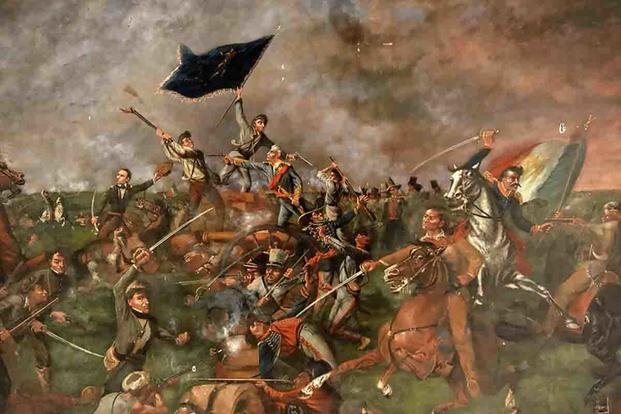Real estate is all about location, location, location. It turns out, so is global military supremacy. Sandwiched by two oceans, Great Lakes and vast deserts, the United States is insulated from external aggression. Meanwhile, large, navigable river networks and enormous tracts of arable land have allowed the U.S. to grow into the arsenal of democracy.
Millions of Americans armed to the teeth with their own private weapons doesn't hurt, but geography is the real reason for America's ongoing superpower status. It's also the reason it could never be successfully invaded by an outside force.

1. Geography allowed the U.S. to grow relatively quickly.
How can a country go from a rowdy collection of drunken farmers to the Arsenal of Democracy in less than 200 years? Elbow grease, know-how and a series of geographic blessings. America has it all, abundant natural resources, the world's largest single tract of arable land and a massive river system that can be used for shipping and transportation.
Capitalism may have its faults, but the strategic and profit-driven use of our resources allowed for massive growth in industry, size and wealth despite the burning of our capital, a civil war, labor riots and waves of civil unrest every.
2. Two oceans are great insulation.
Once that pesky frontier was gone and the U.S. stretched from sea to shining sea, it meant that an invader would have to create a full supply chain that crosses an ocean. Nowadays, that invasion and supply chain will also have to deal with the U.S. Navy's 11 nuclear-powered fleet carriers that will see an invasion long before it could actually land.
And for any would-be invader who thinks they have a shot at getting Hawaii, there are 40,000 troops there that would disagree. Between the air and naval assets there, Hawaii could probably go on the offensive against other countries by itself.

3. Crossing land borders isn't going to be easy.
Since crossing the oceans is unlikely, an invasion of the United States would have to come from across the borders of Canada or Mexico. Geography helps the U.S. out here, too. With a large desert in the Southwest, that would force an invader either to head for California or Texas, two states with large military populations and defense industries.

In the North, invaders would have to cross the Great Lakes to reach any strong population centers, or at the very least, would need to make significant river crossings. In most of the other areas along the U.S.-Canada border, potential invaders would find a whole lot of breathtaking natural parks, but little of military value. And then those parks will probably be full of former military veterans just waiting for a guerrilla war.
4. The continental United States is huge.
Expanding from sea to shining sea was probably the ultimate national defense power move. Having to cross land borders would limit the capabilities and power of an invading force,
Dylan Lehrke, an Armed Forces analyst, suggests that "the combined military capability of the rest of the world would be insufficient to even get a foothold on the continental United States."

This means that not only does an invader need to be able to move troops and materiel to the invasion, but it also has to move them during the fighting. Other countries' armed forces can't really project power outside their slice of the world, let alone bring everything required to move stuff around our slice of the world.
5. The topography is a nightmare for any commander.
Successfully invading the United States from any direction will take enemy forces through many kinds of terrain; forests, swamps and mountains are just a few that come to mind. Fighting effectively in any of these conditions might require specific training and equipment, not to mention the logistics of getting troops through them.

Where the fighting occurs will also limit what kinds of forces could be brought to bear, while American forces in the area would be specially adapted to training in those areas. Moving through areas with no obstructions (and also no cover), like deserts and plains, would turn any attacking force into a shooting gallery for American air power.
-- Blake Stilwell can be reached at blake.stilwell@military.com. He can also be found on Twitter @blakestilwell or on Facebook.
Want to Learn More About Military Life?
Whether you're thinking of joining the military, looking for post-military careers or keeping up with military life and benefits, Military.com has you covered. Subscribe to Military.com to have military news, updates and resources delivered directly to your inbox.










